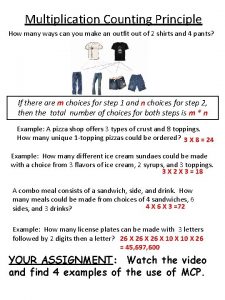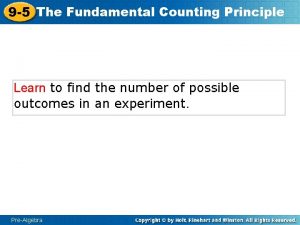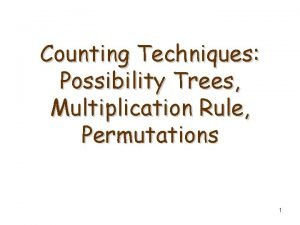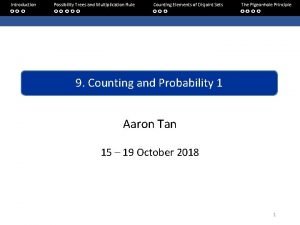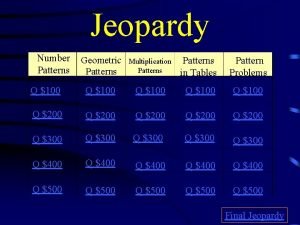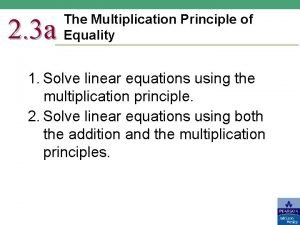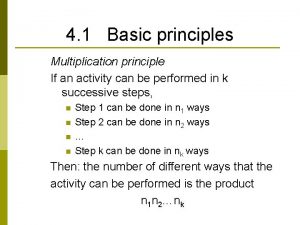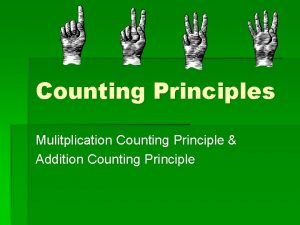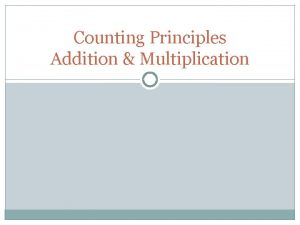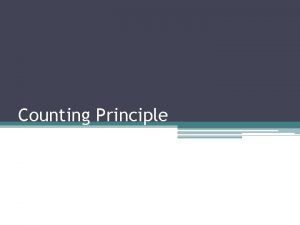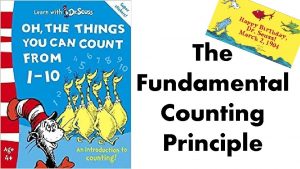6 1 Use Counting Principles Multiplication Counting Principle







- Slides: 7

6. 1 Use Counting Principles

Multiplication Counting Principle • If one event can occur in m ways and another event can occur in n ways, then the number of ways that both events can occur together is m · n. • This principle can be extended to three or more events.

Example – Multiplication Counting Principle • At ECHS, uniforms can be worn using either a navy, black, or white shirt and khaki, black, or navy pants. How many different uniforms can be worn given these shirt and pant color options? • 3 shirt colors; 3 pant colors • 3 · 3 = 9 uniform options

Addition Counting Principle • If the possibilities being counted can be divided into groups with NO possibilities in common, then the total number of possibilities is the sum of the numbers of possibilities in each group. • If one group contains m objects and a second group contains n objects, and the groups have no objects in common, then there are m + n total objects to choose from.

Example – Addition Counting Principle Sandwiches • Turkey • Ham • Roast Beef • Rueben Bergen’s Deli Menu Salads • Cobb Salad • Taco Salad • Grilled Chicken Salad Soups • Tomato • Chicken Noodle • Split Pea How many items can you choose from Bergen’s Deli menu? 4 sandwiches + 3 salads + 3 soups = 10 total items

Example – Addition Counting Principle • A pass code can be made up of 3 symbols (letters and/or digits). How many pass code options are there? • 1 -letter: 26· 10 = 2600; the letter can be in any of the three positions, so 3· 2600 = 7800 • 2 -letters: 26· 10 = 6760; The digit can be in any of the three positions, so 3· 6760 = 20, 280. • 3 -letters: 26· 26 = 17, 576 • 3 -digits (no letters) = 10· 10 = 1000

Pass code Possibilities • The total number of pass codes available can be found as follows: • 7, 800 + 20, 280 + 17, 576 + 1, 000 = 46, 656 • There are 46, 656 possible pass codes given 3 symbols (letters and/or digits).
